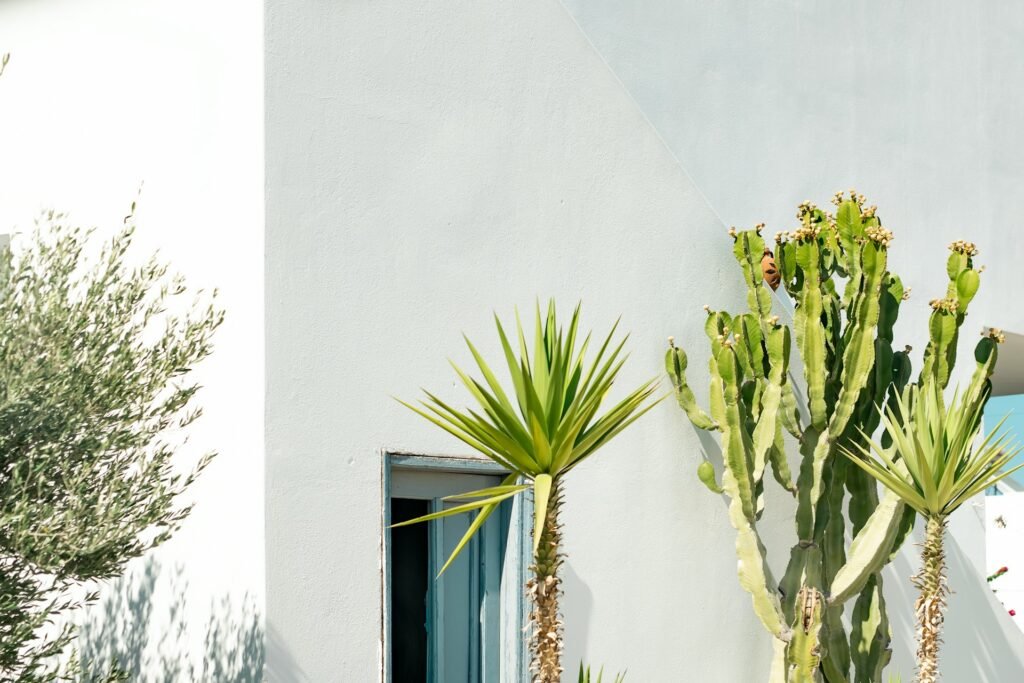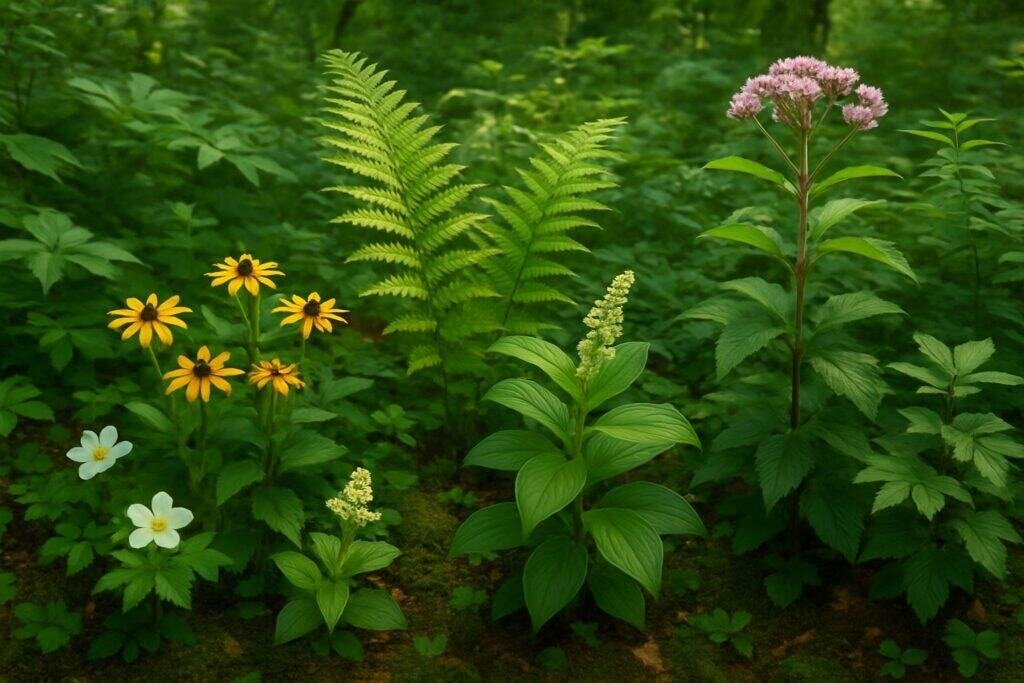Texas native plants are the heart and soul of local landscapes, creating an aesthetic that reflects the state’s diverse ecosystems. From the deserts to the lush piney woods, these plants have adapted to thrive in Texas’s unique conditions. Landscaping with these native species not only enhances the beauty of your garden but also supports local wildlife, providing essential food sources for butterflies and birds.
Choosing Texas-native plants for your garden means selecting flora that is meant to be there. These plants require less water, are resistant to local pests, and help maintain the ecological balance. They offer a smart and sustainable way to create a vibrant and resilient landscape that celebrates Texas’s natural heritage.
Embracing Texas’ Native Flora
Embracing Texas native plants in landscaping brings a slice of the state’s wild beauty into your own backyard. These plants have evolved to withstand the local climate, making them a practical choice for gardeners. They also play a crucial role in providing food sources for butterflies and birds, supporting the state’s wildlife.
The Resilience of Texas Native Plants
The resilience of Texas native plants is unmatched, having adapted over time to the state’s fluctuating weather patterns and soil types. This natural toughness allows them to withstand drought and heat with minimal assistance, making them a steadfast choice for any Texas landscape.
Ecological Benefits of Planting Natives
Planting native species goes beyond aesthetics; it’s an investment in the environment. These plants support local ecosystems, improve soil health, and provide habitats for wildlife. They are an integral part of conserving Texas’s biodiversity.
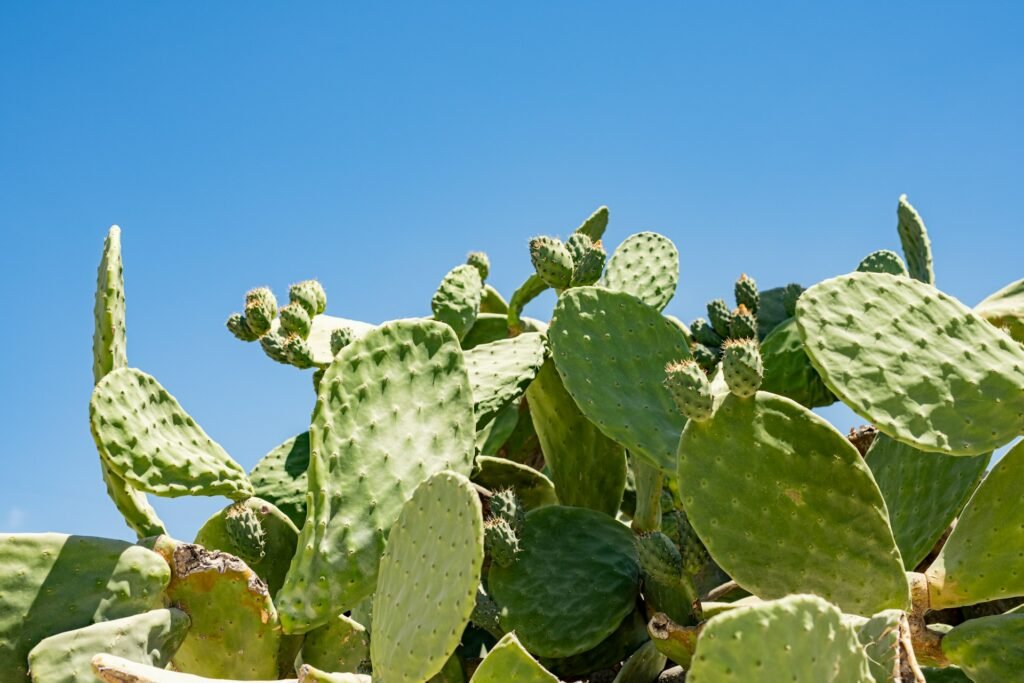
Popular Native Flowering Plants
In Texas landscapes, native flowering plants are not only visually striking but also vital for ecological health. They add splashes of color throughout the seasons and attract a myriad of pollinators. These blooms are the jewels in the crown of a Texas garden, offering both beauty and benefits to the environment.
Enrich Your Garden’s Palette
Native flowering plants are the perfect way to enrich your garden’s palette with a variety of hues and textures. They bring life to your landscape, encouraging a connection with the natural world.
Scarlet Sage (Salvia coccinea)
Texas sage, also known as Scarlet Sage, thrives in well-drained soil and brings a vibrant splash of color to your landscape. Its striking red flowers are a magnet for hummingbirds and butterflies, making it a lively addition to any garden.
Blue Mistflower (Conoclinium coelestinum)
Thriving in moist soil, the Blue Mistflower’s flowers bloom in a profusion of blue that’s both captivating and beneficial to pollinators. This plant is a fantastic choice for areas with damp soil, adding a cool-toned contrast to the garden.
Black-eyed Susan (Rudbeckia hirta)
Black-eyed Susan is a cheerful presence, with bright yellow petals and a dark center drawing the eye. This hardy plant is a favorite among gardeners for its ease of care and long-lasting blooms.
Rock Rose (Pavonia lasiopetala)
Rock Rose is known for its hibiscus-like flowers, offering a delicate charm to xeric gardens. Tolerant of drought and heat, it’s an excellent choice for creating a low-maintenance yet beautiful landscape.
Winecup (Callirhoe involucrata)
Also known as Purple Poppy Mallow, Winecup thrives in rocky areas and brings a unique beauty to Texas gardens. These plants grow well in full sun to light shade and are known for their cup-shaped, wine-colored flowers.
Hardy Native Trees for Texas Landscapes
Hardy native trees are the backbone of Texas landscapes, offering shade, structure, and a home for wildlife. Texas natives like the majestic oaks and whispering pines are not just trees; they are living symbols of the state’s natural grandeur.
Cedar Elm (Ulmus crassifolia)
Cedar Elm, a North American native, is a resilient shade tree that brings a stately presence to any landscape. It’s adaptable to various soils and resistant to powdery mildew, making it a dependable choice among gardeners.
Shumard Red Oak (Quercus shumardii)
In the Lone Star State, the Shumard Red Oak is a cherished native, valued for its rapid growth and stunning fall foliage. It’s a symbol of strength and endurance in Texas landscapes.
Mexican Plum (Prunus mexicana)
The Mexican Plum, with its fragrant white blossoms that give way to edible fruits, is a charming addition to any Texas garden. It’s particularly attractive to wildlife, providing nectar for pollinators and food for birds. In the fall, the tree’s foliage turns a stunning shade of crimson, adding seasonal interest to the landscape.
Bald Cypress (Taxodium distichum)
Graceful and stately, the bald cypress stands tall in the Texan landscape. Its feather-like foliage provides a soft visual texture, and in autumn, it transitions into a beautiful rusty orange. This deciduous conifer thrives in wet conditions, making it an excellent choice for areas near water features or in low-lying spots in the yard.
Stunning Native Shrubs
Integrating native shrubs into the landscape not only enhances visual appeal but also bolsters the local ecosystem. These plants are well-adapted to Texas’s climate, requiring less maintenance and providing habitat for native wildlife. Their durability and variety offer endless possibilities for creating a visually striking and sustainable garden design.
Texas Sage (Leucophyllum frutescens)
Texas Sage is an evergreen shrub that flourishes under the heat and drought conditions typical of Texas climates. Its silvery green leaves and purple flowers that bloom after rainfall are a sight to behold. This hardy shrub is perfect for creating an eye-catching landscape that is both beautiful and resilient.
American Beautyberry (Callicarpa americana)
With its striking clusters of purple berries that emerge in the fall, the American Beautyberry is a showstopper in any landscape. The bright fruit stands out against the shrub’s green leaves and attracts various birds to the garden, making it a valuable addition for both aesthetics and wildlife support.
Yaupon Holly (Ilex vomitoria)
Yaupon Holly is a versatile shrub with glossy green leaves and red berries that provide year-round interest. It’s adaptable to a range of soil types and is drought-tolerant once established. This shrub can be pruned into a formal hedge or left in its natural form for a more relaxed aesthetic.
Flame Acanthus (Anisacanthus quadrifidus var wrightii)
Also known as the Hummingbird Bush, Flame Acanthus is a favorite in Texas landscapes. Its tubular red-orange flowers are a magnet for hummingbirds and butterflies. This drought-tolerant shrub can withstand the Texas heat and provides a vibrant splash of color from summer through fall.
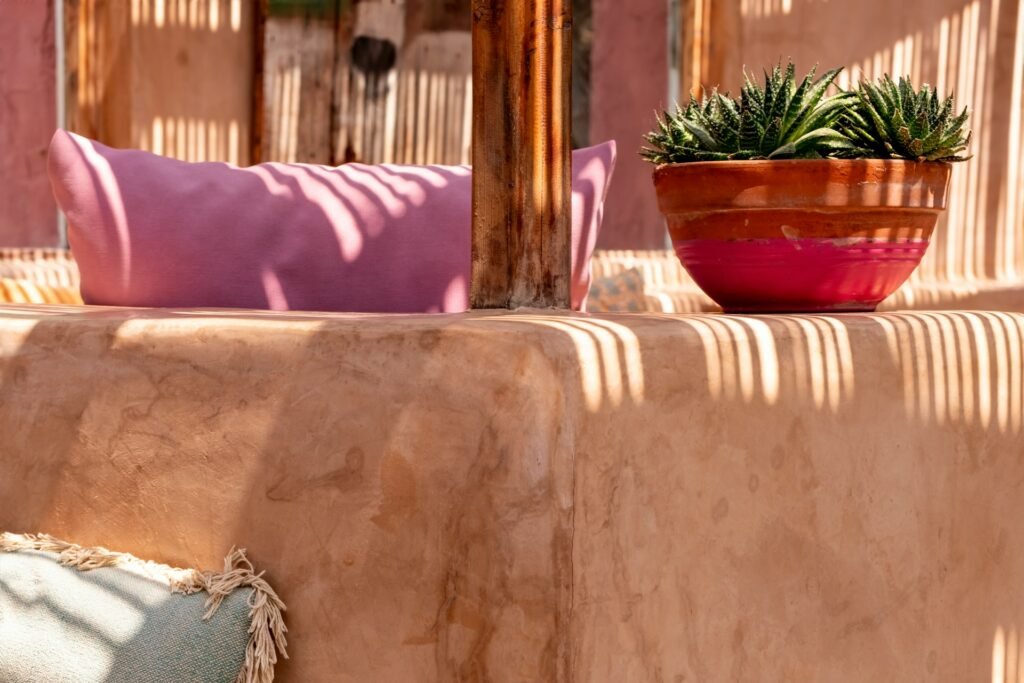
Versatile Native Ground Covers
Native ground covers offer a practical and attractive solution for covering bare patches in the landscape. These plants can stabilize soil, suppress weeds, and provide a continuous layer of vegetation that enhances the overall beauty of the garden.
Golden Groundsel (Packera obovata)
Golden Groundsel illuminates the garden with its bright yellow flowers and heart-shaped green leaves. It thrives in moist areas and partial shade, making it an excellent choice for those challenging spots in the garden where other plants might struggle to grow.
Horseherb (Calyptocarpus vialis)
Horseherb is a hardy ground cover well-suited for North Texas, tolerating both sun and partial shade. Its small, yellow flowers bloom almost year-round, creating a charming and durable carpet ideal for walkways or as a lawn alternative.
Native Vines for Vertical Accents
Native vines are an invaluable asset for adding vertical interest to a landscape, transforming fences, trellises, and other structures into lush, living walls.
Coral Honeysuckle (Lonicera sempervirens)
Coral Honeysuckle is a captivating vine known for its coral-red tubular flowers that attract hummingbirds and butterflies. The vine’s twining habit makes it ideal for climbing up fences, arbors, and trellises, where it can reach for the sun while providing a lush backdrop. Its flower clusters, which bloom from spring to fall, are a source of nectar for pollinators and add a splash of color to the greenery.
Carolina Jessamine (Gelsemium sempervirens)
As the winter or early spring season unfolds, Carolina Jessamine emerges as a standout vine with its vibrant yellow flowers. This Texas native adorns landscapes with its twining growth habit and profuse blossoms that attract hummingbirds and butterflies. Its evergreen foliage provides year-round interest, making it a popular choice for gardeners seeking a splash of color in the cooler months.
Ornamental Native Grasses and Sedges
Ornamental native grasses offer a unique blend of beauty and resilience, adapting seamlessly to the Texas climate. They bring an element of softness and movement to the landscape, swaying gracefully with the breeze. These grasses require minimal maintenance, thrive in a variety of soil conditions, and provide habitat for local wildlife, making them an essential component of a Texas-friendly garden.
Gulf Muhly (Muhlenbergia capillaris)
The Gulf Muhly is a captivating ornamental grass known for its pink to lavender plumes that dance above its fine-textured foliage. As these plants bloom in the fall, they transform the landscape into a painterly scene of soft, waving colors. Ideal for full sun-to-light shade, Gulf Muhly is also appreciated for being a low-maintenance choice that can thrive in a range of soil types.
Little Bluestem (Schizachyrium scoparium)
Little Bluestem is a drought-tolerant plant that showcases the rugged beauty of Texas landscapes. Its tall flowering stalks rise in the summer, crowned by fluffy seed heads that persist into winter, providing visual interest and food for birds. This heat and dry condition-loving grass initiates its spring growth with blue-green blades that turn to a striking reddish-bronze in the fall.
Indiangrass (Sorghastrum nutans)
Indiangrass, a native of the Edwards Plateau, is a tall, clumping grass that brings a golden hue to the landscape with its lofty seed heads. This Indian Grass, Sorghastrum nutans, thrives in full sun or partial shade and grows naturally throughout Texas. Its adaptability and the striking appearance of its seed heads make it a favorite for naturalistic plantings.
Nurturing Your Native Plant Landscape
Creating a thriving native plant landscape in Texas involves understanding the specific needs of the local flora. By selecting the right plants for the right places, gardeners can minimize maintenance and maximize the health and beauty of their gardens. Proper planting and ongoing care are crucial for establishing a resilient and vibrant landscape.
Planting and Care Tips
Success with native plants begins at planting. Choose species that are well-suited to your site’s conditions, such as soil type and sunlight. Planting natives in their optimal growing conditions reduces the need for extra water and fertilizers and increases their ability to withstand pests and diseases. A well-planned native landscape can flourish with minimal intervention.
Watering and Fertilizing Native Plants
Native plants are accustomed to Texas’ climate and often require less water and fertilizer than non-natives. Once established, many natives are drought-tolerant, needing only occasional watering. Fertilizing should be done sparingly, if at all, to avoid promoting weak, fast growth that can reduce a plant’s natural hardiness and invite pests.
Pruning and Maintenance Best Practices
Pruning native plants in Texas is generally minimal, focusing on removing dead or damaged growth and shaping plants as desired. It’s best to prune during the dormant season to avoid stressing the plants during the hot summer months. Regular maintenance should also include mulching to conserve moisture and suppress weeds, further easing the upkeep of a native plant landscape.
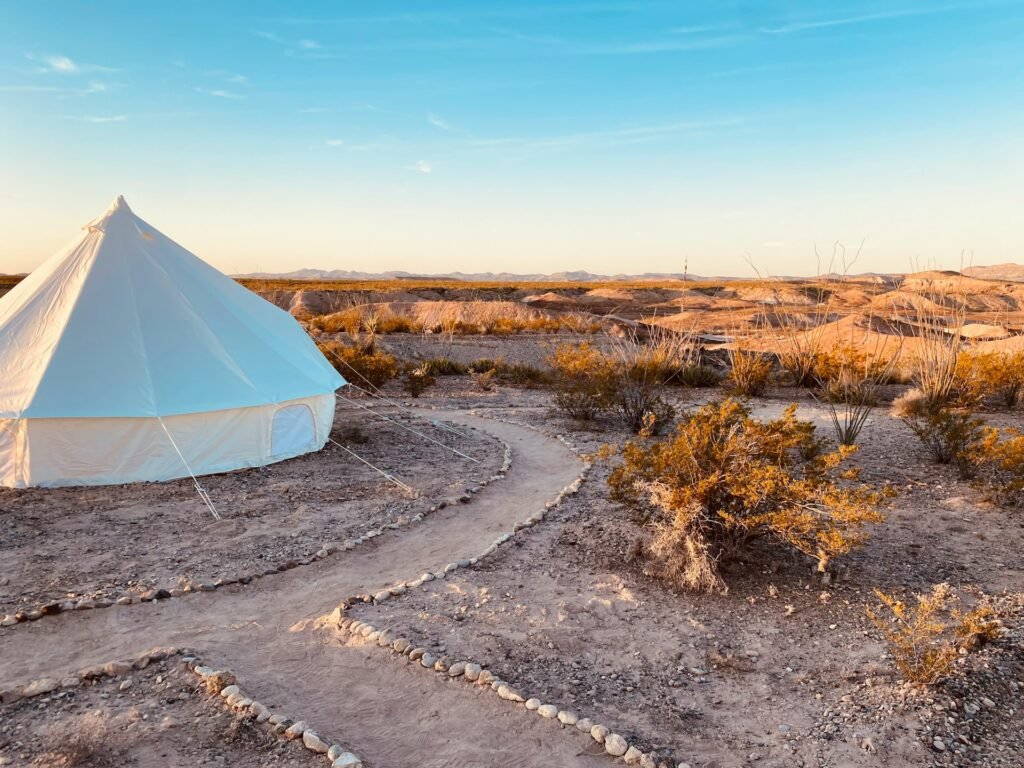
Conclusion: The Enduring Beauty of Texas Native Plants
The landscape of Texas is a tapestry woven with the resilient beauty of native plants. From the vibrant orange flowers of the Texas lantana that dance in the San Antonio sun to the showy flowers of the autumn sage, these species have evolved alongside the region’s unique climate. They offer not only a dazzling display but also a haven for butterflies and other pollinators, serving as host plants and providing food and shelter.
Native shrubs like the yaupon holly display berries that persist through the winter, offering a splash of color even in the bleakest months. Texas gardens benefit from the versatility of plants like the Texas firecracker, a medium-sized shrub that tolerates heat and thrives in periods of drought. As the Native Plant Society of Texas advocates, by choosing plants that are native to this land, gardeners support a rich ecological web, preserving the essence of Texas’ natural heritage for generations to come.

